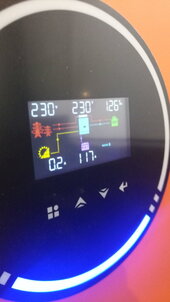

Option 02 utility+solar charging current max is set to 120A
Option 11 utility charging current max is set to 2A
As soon as I set option 16 charge source prio from CSO to SNU current starts increasing to 117A(124 measured) and stays there while fans spin at max.
This is a new inverter, seller does not have a clue. It is good that battery supports 250a charging current, but my mains will not if the load increases.
Inverter specs mention maximum 100A utility charging current, which is now exceeded. In CSO mode it does not charge with utility during the night where there is no sun.
Does anyone encountered similar situation? Is there a known bug in firmware? Does not seems to be hardware related, because if I change option 02 to a lower setting, the charging current does drop accordingly. It is just that option 11 is completely ignored.
Last edited:




